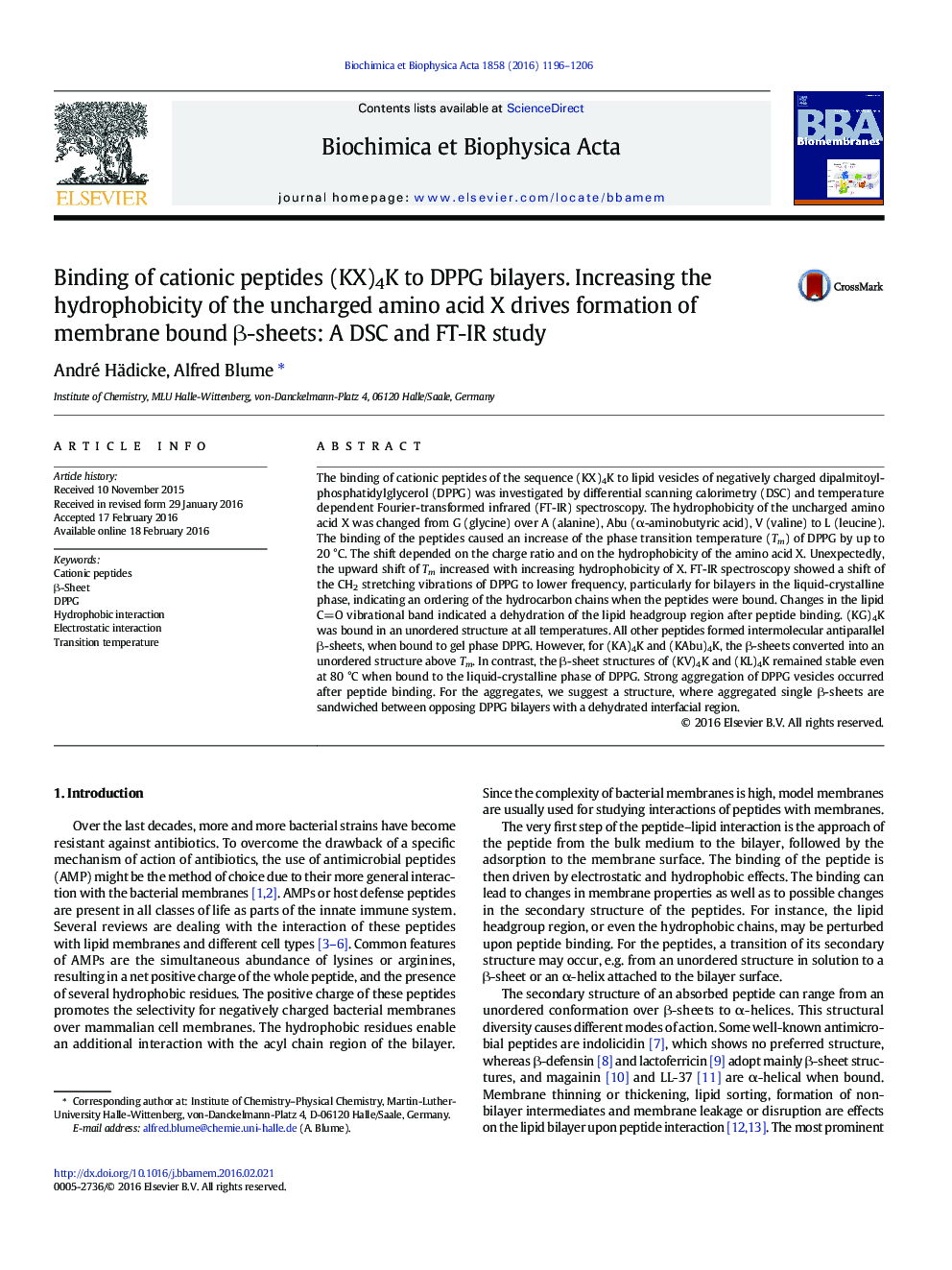| کد مقاله | کد نشریه | سال انتشار | مقاله انگلیسی | نسخه تمام متن |
|---|---|---|---|---|
| 1943970 | 1053169 | 2016 | 11 صفحه PDF | دانلود رایگان |

• Binding of peptides (KX)4K to DPPG membranes was studied by DSC and FT-IR.
• The hydrophobicity of X determines secondary structure when membrane-bound.
• The secondary structure of (KX)4K can change with temperature.
• When X = L or V, stable membrane-bound β-sheets are formed at all temperatures.
• Bound β-sheets strongly increase the phase transition temperature of DPPG.
The binding of cationic peptides of the sequence (KX)4K to lipid vesicles of negatively charged dipalmitoyl-phosphatidylglycerol (DPPG) was investigated by differential scanning calorimetry (DSC) and temperature dependent Fourier-transformed infrared (FT-IR) spectroscopy. The hydrophobicity of the uncharged amino acid X was changed from G (glycine) over A (alanine), Abu (α-aminobutyric acid), V (valine) to L (leucine). The binding of the peptides caused an increase of the phase transition temperature (Tm) of DPPG by up to 20 °C. The shift depended on the charge ratio and on the hydrophobicity of the amino acid X. Unexpectedly, the upward shift of Tm increased with increasing hydrophobicity of X. FT-IR spectroscopy showed a shift of the CH2 stretching vibrations of DPPG to lower frequency, particularly for bilayers in the liquid-crystalline phase, indicating an ordering of the hydrocarbon chains when the peptides were bound. Changes in the lipid C=O vibrational band indicated a dehydration of the lipid headgroup region after peptide binding. (KG)4K was bound in an unordered structure at all temperatures. All other peptides formed intermolecular antiparallel β-sheets, when bound to gel phase DPPG. However, for (KA)4K and (KAbu)4K, the β-sheets converted into an unordered structure above Tm. In contrast, the β-sheet structures of (KV)4K and (KL)4K remained stable even at 80 °C when bound to the liquid-crystalline phase of DPPG. Strong aggregation of DPPG vesicles occurred after peptide binding. For the aggregates, we suggest a structure, where aggregated single β-sheets are sandwiched between opposing DPPG bilayers with a dehydrated interfacial region.
Figure optionsDownload high-quality image (399 K)Download as PowerPoint slide
Journal: Biochimica et Biophysica Acta (BBA) - Biomembranes - Volume 1858, Issue 6, June 2016, Pages 1196–1206